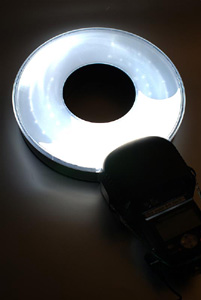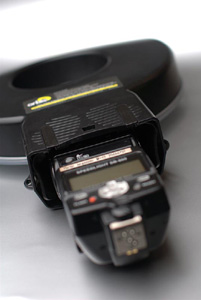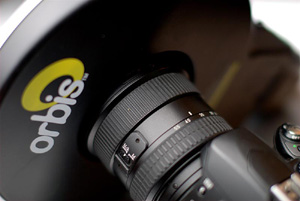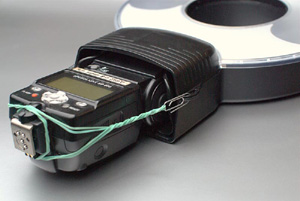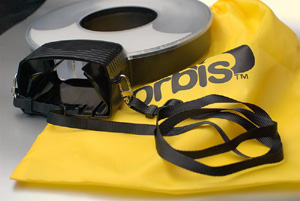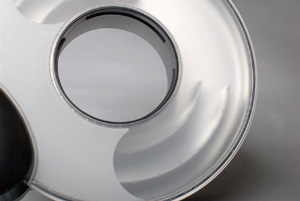Orbis ringflash adapter
I have always been fascinated by ringflash photography.
I have always been fascinated by ringflash photography, but the only ring flashes I have shot extensively with myself have been the compact macro ones.
Large, studio-style flashes have been out of my reach due to some agonizing price tags.
But that has changed. With the appearance of ringflash adapters from several manufacturers, ringflash photography has become if not directly inexpensive then at least approachable. The ringflash adapter is in essence a light modifier, which will fit on your speedlight and transform its light to a ring shape.
I have now used the Orbis adapter quite extensively. Orbis is a New Zealand product, but widely available. I have been very pleased with its capabilities. But before I go into details about the Orbis, let me just briefly describe the physique and principle of a ringflash to you.
Ringflashes fall in two main categories: small ones for macro work and large ones for portraiture and fashion. I'm covering the latter category here, and might return to the macro ringflash later.
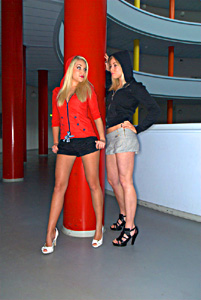
[Nikon D200, Nikkor 17-55mm, SB-800 in Orbis ringflash adapter]
A ringflash is as the name implies a ring shaped flash. In most cases you will poke your lens through the hole in the flash and get a very special and characteristic type of light because you essentially have light spread very evenly and straight on your subject.
Although you might imagine that it will be much like the light from a flash stuck in the hotshoe of the camera, the light from a ringflash is very different. Due to the fairly large size of the flash you get a diffused light, and due to the placement – around the lens – your basically get no shadows, or at least just some faint and very evenly diffused shadows, and only behind the subject. Since you also have the light right on axis of the lens, you often get reflections from shiny surfaces, another hallmark of the ringflash.
The style of the ringflash is used by many fashion photographers, but feature and portrait photographers have also adopted the ringflash. Jill Greenberg is well known for her use of ringflash – most times in combination with a bunch of other light sources – but many fashion photographers use the bare and brutal light of one ring flash to obtain that typical “trashyâ€, unforgiving ringflash look.
The Orbis ringflash adapter belongs to a new generation of the larger studio ringflash category. It's an adapter, meaning that the idea is that you stick an existing battery flash into it. The Orbis then spreads the light with an intricate system of reflectors and diffusers and makes sure that it comes out evenly spread around the ring. The ring is about 8 inches or 20 centimeters in diameter, and although it's fairly big compared to a speedlight, it's both compact and lightweight when compared to most studio ringflashes.
And it's potentially wireless! Since you use your normal flash, any means of triggering the flash that you usually use – cable, CLS, radio triggers, optical slaves – will work on the Orbis, which makes it extremely flexible and handy to use.
The flash is stuck into an opening in the side of the Orbis, and even though most flashes won't sit rock steady, a couple of springy tongues hold the flash in place. Since the idea is to hand hold the flash, you usually have no problems keeping the two parts together, but personally I have used gaffer tape or rubber bands on a couple of occasions to keep the flash more firmly in the adapter.
The Orbis is made of ABS-plastic, and seems very well made. It's compact, seems very sturdy and the finish is good. It will endure some rough use, but probably not a drop on a concrete floor. But then again: most of our gear won't.
Shooting with the Orbis is no big deal. Stick the flash in the adapter, the lens through the opening and press the shutter release. Use your normal settings, be it manual or automatic. The adapter easily takes large lenses, and my 77mm Ø 10-20, 17-55, and 70-200 all go though with no hassle. The inner diameter is 85 mm and that will be the largest diameter of any lens you can get through, which means that the far majority of pro lenses in the most useful range for model and fashion shots will fit.
I have used the Orbis with an SB-800 and an SC-28 cable on most of my shoots, but also used a set of Flash Waves radio triggers and as well as CLS. All worked well, the only issue being my hand covering the sensor on the flash on a couple of occasions when using CLS.
You can of course also use the Orbis off camera, where it will create a nicely diffused light. Just hold it to one side, pointing it directly at your subject, and you will get a light softer than what most stick-on diffusers can provide. Due to the larger size of the Orbis, you will probably need to get a small softbox or umbrella to get equally soft light.
I have also used the flash for macro shots in this way, and any object smaller than 5-10 inches or up to 25 centimeters will be very nicely lit from the flash. If you want it, the Orbis can be used for traditional macro shots, but the large diffuser and its spreading of the light makes it a bit less efficient than a dedicated macro ringflash.
My only immediate grudge with the Orbis is that I have to hand hold it. Not that it's difficult or vastly different from hand holding any off camera flash, but it keeps both my hands occupied, and simple tasks such as turning the camera to portrait orientation or replaying images to show to models become a little cumbersome.
On the other hand I'm happy that the Orbis is not meant to fit on the flash while this is sitting in the hot shoe. This would most likely lead to wobbling and a lot and stress both the camera and the flash, and not really be such a great idea.
I know that Orbis is working on a bracket for the flash - they call it an arm - and once this is released, the adapter can probably be mounted on the camera in a more sturdy manner.
The Orbis already comes with a small strap and eyes to clip it in, enabling you to carry it over a shoulder. I have used the eyes to secure the flash with a makeshift rubber band and paper clip system. The Orbis also has some features, which don't seem to have any use yet, like an inner bayonet in the opening and some tongues and latches which don't seem to engage in anything right now. These might be for the arm, but could also be for other applications.
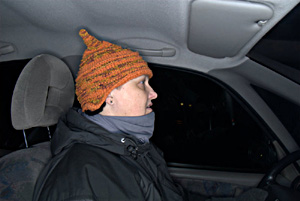
[Nikon D200, Nikkor 17-55mm, SB-800 in Orbis ringflash adapter]
But even as it is, the Orbis is a great little gadget, which brings you all the way into ringflash shooting. The power of the light relies only on what flash you use. With an SB-800 you get a lot of light, loosing only about one stop when on manual, and the Orbis will work fine with the new SB-900 too. There is more than enough power to shoot models at a distance, which allows for some creative freedom.
The Orbis is about 200 USD, and as I said not exactly inexpensive, but the adapter is on the other hand nicely built, sturdy, portable and a very useful and creatively stimulating supplement to your current speedlight – and not least way less expensive than any studio ringflash.
So if you want to play with that ringlight look, the Orbis is a great way to get there.
Below you can see a couple of videos with James Madelin from Orbis introducing the ringflash adapter.
Orbis
Find thehere.
You can also follow Orbis'
on Twitter
